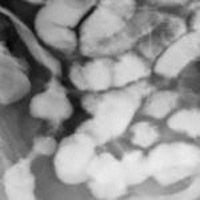Article
Identifying Source of Gastrointestinal Dysfunction in Type 1 Diabetes
Author(s):
According to findings published in Cell Stem Cell, the cause of gastrointestinal symptoms in type 1 diabetes has been discovered.

According to findings published in Cell Stem Cell, the cause of gastrointestinal symptoms in type 1 diabetes has been discovered.
Researchers from the University of Texas Health Science Center at San Antonio compared intestinal tissues from diabetic patients and healthy individuals to determine the cause of chronic gastrointestinal symptoms such as gastroparesis, irritable bowel syndrome (IBS), abdominal distension, and fecal incontinence. All of these symptoms — collectively called diabetic enteropathy – reduce the diabetic patients’ quality of life, the researchers added.
The researchers determined that a protein called insulin like growth factor binding protein 3 (IGFBP3) was at the root of diabetic enteropathy. The protein is produced in the liver and in patients with type 1 diabetes. The protein binds to a receptor protein on colonic stem cells, causing apoptosis, which then damages the intestinal lining, the researchers explained.
“This is a very exciting finding, obtained by studying patients’ cells, that has the potential to result in a new treatment for this chronic complication of longstanding type 1 diabetes,” study co author Franco Folli, MD, PhD explained in a press release.
Meanwhile, researchers from Boston Children’s Hospital and Harvard Medical School in Boston investigated the damaged colonic tissue and experimented further. The altered colonic tissue demonstrated increased blood levels and IGFBP3 levels. The team determined that IGFBP3 had a toxic effect on the colonic tissue and supported the finding that the structure of the intestinal lining was compromised due to the protein.
“A potential new treatment for diabetic enteropathy might reduce the level of IGFBP3 by preventing its production and release from the liver; however, interfering with liver function is somewhat problematic and potentially dangerous,” added Paolo Fiorina, MD, PhD in another statement. “That is why we decided to create a new drug capable of quenching free circulating IGFBP3.”
Using an investigational drug designed to block IGFBP3, Fiorina’s team restored full gastrointestinal function in mice models’ mucosal lining.
The team understands the next step in their process is to develop a clinical grade compound; these findings pave the way forward to do that, they said.




